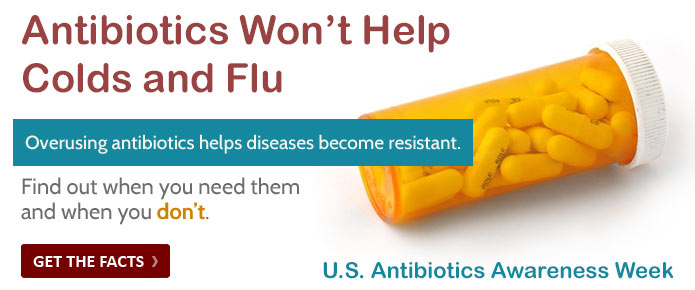
Whether a disaster is natural or man-made, preparation is essential. Begin by meeting with your family and discuss why you need to be prepared for a disaster, and work together to prepare a family disaster plan.
Four Steps to Safety
1: Anticipate What Could Happen to You
- Anticipate man-made and natural disasters, such as hazardous waste spills, fires, floods, tornados, hurricanes, ice storms, and etc.
- Learn about your community's warning signals. Check with your local emergency management office.
- Ask your Veterinarian about animal care after a disaster. Animals are not allowed inside emergency shelters because of health regulations. Visit the Pets web page for additional information.
- Find out how to help elderly or disabled persons, if needed. Visit the People with Disabilities web page for more information.
- Find out about the disaster plans at your workplace, your children's school or day care center, and other places where your family spends time.
2: Create a Disaster Plan
- Meet with your family and discuss why you need to prepare for disaster. Explain the dangers of fire, severe weather, and earthquakes to children. Plan to share responsibilities and work together as a team.
- Discuss the types of disasters that are most likely to happen. Explain what to do in each case.
- Pick two places to meet. For example:
- Right outside your home in case of a sudden emergency, like a fire.
- Outside your neighborhood in case you can't return home. Everyone must know the address and phone number.
- Plan alternative transportation for your children if necessary.
- Ask an out-of-state friend to be your "family contact." After a disaster, it's often easier to call long distance. Other family members should call this person and tell them where they are. Everyone must know your contact's phone number.
- Discuss what to do in an evacuation. Plan how to take care of your pets.
For a detailed family readiness plan, download and complete our Disaster Plan Template for your own family.
3: Complete This Checklist
- Post emergency telephone numbers by phones (fire, police, poison control, etc.).
- Teach children how and when to call 9-1-1 or your local Emergency Medical Services number for emergency help.
- Check if you have adequate insurance coverage.
- Train each family member on how to use the fire extinguisher (ABC type), and show them where it's kept.
- Install smoke detectors on each level of your home, especially near bedrooms.
- Stock emergency supplies and assemble a disaster supply kit.
- Take a Red Cross first aid and CPR class.
- Determine the best escape routes from your home. Find two ways out of each room.
- Find the safe places in your home for each type of disaster.
4: Practice and Maintain Your Plan
- Quiz your kids every six months.
- Conduct fire and emergency evacuation drills.
- Replace stored water every six months and stored food every six months.
- Test and recharge your fire extinguisher(s) according to manufacturer's instructions.
- Test your smoke detectors monthly and change the batteries at least once a year.
Neighbors Helping Neighbors
Working with neighbors can save lives and property. Meet with your neighbors to plan how the neighborhood could work together after a disaster until help arrives.
If you're a member of a neighborhood organization, such as a home association or crime watch group, introduce disaster preparedness as a new activity.
Know your neighbors' special skills (e.g., medical, technical) and consider how you could help neighbors who have special needs, such as disabled and elderly persons. Make plans for childcare in case parents can't get home.
Home Hazard Hunt
During a disaster, ordinary objects in your home can cause injury or damage. Anything that can move, fall, break, or cause a fire is a home hazard. For example, a hot water heater or a bookshelf can fall. Inspect your home at least once a year and fix potential hazards.
Evacuation
- Evacuate immediately if told to do so.
- Listen to your battery - powered radio and follow the instructions of local emergency officials.
- Wear clothing that offers protection such as pants, long sleeve shirts and sturdy shoes.
- Take your disaster supply kit.
- Lock your home.
- Use travel routes specified by local authorities-don't use shortcuts because certain areas may be impassable or dangerous.
If you're sure you have time
- Make arrangements for your pets.
Emergency Supplies
Keep enough supplies in your home to meet your needs for at least three days. Assemble your disaster supply kit with items you may need in an evacuation.
Store these supplies in sturdy, easy-to-carry containers such as backpacks, duffel bags, or covered trash containers.
Include:
- Adjustable wrench to turn off gas meter
- A three-day supply of water (one gallon per person per day) and food that won't spoil.
- One change of clothing and footwear per person, and one blanket or sleeping bag per person.
- A first aid kit that includes your family's prescription medications.
- Emergency tools including a battery-powered radio, flashlight, and plenty of extra batteries.
- An extra set of car keys and a credit card, cash or traveler's checks.
- Sanitation supplies.
- Special items for infant, elderly, or disabled family members.
- An extra pair of glasses.
- Keep important family documents in a waterproof container. Keep a smaller kit in the trunk of your car.
A detailed list of items to put in your disaster supply kit can be found on the Disaster Kit web page.
If Disaster Strikes
Remain calm and patient. Put your plan into action.
Check for injuries: Give first aid and get help for seriously injured people.
Stay informed: Listen to your battery-powered radio for news and instructions
Evacuate if advised to do so. Wear protective clothing and sturdy shoes.
Check for damage in your home:
- Use flashlights. Do not light matches or turn on electrical switches, if you suspect damage.
- If you smell gas or suspect a leak, open windows, and get everyone outside quickly. From a safe location call 911 or your local gas company to report the leak.
- Clean up spilled medicines, bleaches, gasoline, and other flammable liquids immediately.
Remember to:
- Confine or secure your pets.
- Call your family contact - do not use the telephone again unless it is a life-threatening emergency.
- Check on your neighbors, especially elderly or disabled persons.
- Make sure you have an adequate water supply in case service is cut off.
- Stay away from downed power lines.
The Disaster Supplies & Preparedness Calendar will assist you in assembling your emergency kit over a six-month period. Print the calendar and purchase the suggested items in small increments within your normal weekly shopping.
Need help writing your plan? Here is a Family Disaster Plan Template for you to use.

